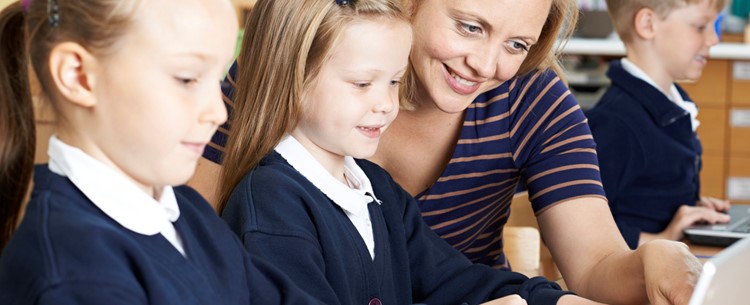As a childcare worker, preschool, or kindergarten teacher the instructional decisions you make have a profound impact on a child's learning. Teaching strategies in ECE lay the foundation for the future development of skills and knowledge. Going one further, intentional teaching strategies in childcare and education is about making a lasting impact and impression on a young child's learning and when it comes to integrating technology in childcare and education, it is no different.
What is Intentional Teaching?
According to the QCAA, "intentional teaching strategies is an active process and a way of relating to children that embrace and build on their strengths, interests, ideas and needs. It requires teachers to be purposeful in their decisions and actions. Intentional teaching extends children’s thinking, builds deep understanding, and occurs in emergent and planned experiences. Teachers use a range and balance of strategies to cater to and promote all children’s learning."
So what is intentional teaching in early childhood? As an early childhood teacher, this means " explicitly teach knowledge and skills to individuals or small groups that support the children learning" (Aussie Childcare Network). You can find intentional teaching strategies early childhood examples below in relation to technology integration in the preschool, kindergarten and early year primary teaching.
Within the early childhood learning settings, there are many interactions that occur between early childhood teachers, children, the context, and the content. Intentional teaching involves the teacher playing a big role in ensuring that these interactions bring about learning for children.
Especially in early childhood, you need to be thinking about what you are doing as a teacher and how you supporting children’s learning and development.
This continual thinking makes it a dynamic process and promotes a range of pedagogical practices. This could involve intentionally altering the environment or altering the teaching materials. The Early Years Learning Framework (EYLF) describes ‘intentional teaching’ that is purposeful, thoughtful, and deliberate as opposed to describing a specific approach to teaching. Early childhood teachers who are aware of the impact of their teaching on children’s learning play a significant role in readdressing education inequality in Australia and abroad.
If you are an intentional teacher you would:
- Sensitively observe children and intentionally plan to deepen, extend and sustain children’s interests through provocations, tools and resources, documentation, and dialogue.
- Organise and maintain the physical environment to ensure access to appropriate resources and optimal support for positive experiences.
- Create specific challenges and plan interactions designed to extend children’s capabilities and higher-order thinking skills.
- Participate in child-initiated play activities and develop complex imaginative role play narratives with children.
- Model and demonstrate skills as well as providing specific direction or instruction.
LEARN ALSO ABOUT:
Early Childhood Education teaching strategies
Intentional Strategies in ECE
In an intentional, well-planned, and developmentally appropriate classroom, technology experiences are integrated into child-play. Research shows (Simon & Nemeth, 2012, p. 32) that whenever you choose to use technology as an intentional teaching tool that it should never replace any other experiences or opportunities.
It is all about balance.
Here are some intentional strategies that involve the use of technology. These teaching strategies in early childhood are evidence-based in that they help build on child home experiences of technology and develop their ICT capability and ICT literacy. All are EYLF teaching strategies for the learning outcomes 4 and 5.
The following is a list of strategies for intentional teaching in childcare, preschool and kindergarten to do with technology integration the classroom.
Examples of intentional teaching in early childhood include:
Intentional Environments
Positioning the materials: plan and think about certain technologies (either child-made, working or defunct ones) that you wish for the children use on the day. Place them into their role play boxes.
Encourage them to combine the toys in the boxes.
Collecting materials: it is a good idea to help them collect the materials they need in order to create the technology which is on their mind. Support their knowledge and skills in counting and seriation.
Documentation and display: this forms an essential part of the assessment for learning in early childhood. However, you can also display posters of the proper use of technology or even photos of them using technology in their play.
Additionally, the documentation collected relating to a child’s technology use can include data that illustrates their capabilities in ICT and the levels of understanding which they have.
Scheduling: You could organise a time to support children’s changing interests and levels of concentration when using technology in early childhood. Also, get involved with children and have in-depth conversations about the use of technology in their lives and in society. Talk to them about how they use technology at home and find out data to use for your future planning.
Intentional teaching interactions
Encouragement: when using technology in early childhood motivation and encouragement is a given. Children are naturally motivated to use it so it best to take advantage of this and employ effective teaching strategies for early childhood that will not only enhance the learning of the context, but also develop their ICT capabilities.
Facilitation: you can achieve this by promoting autonomy in their use of technology at your early childhood education and care centre. Through role-play that encourages the use of technology independence in ICT can be supported.
Using technology outdoors is a method in early childhood to encourage both role-play and the use of ICT together. As ICT naturally brings children together to collaborate it is also good to promote cooperation between children. If your aim is to further enhance literacy and language development in early childhood then technology is a great medium for this too.
Positioning yourself: by placing yourself in a position beside the child when they are sitting at the computer or using the iPad, you provide an atmosphere of warmth and support and care for them. Keep eye contact and smile at them when they are showing you or talking to you about using technology.
Grouping: while ICT typically brings people together to collaborate, you may want to take advantage of this and develop children’s cooperative skills. There are cognitive skills developed at this time too, however, don’t forget to promote the development of their metacognitive skills in the use of technology in early childhood.
It is important that you provide appropriate scaffolding between capable and less capable children. You can also group the more ICT capable children with the less ICT capable children.
Listening: you can encourage children to share their ideas and thoughts about technology. Your listening skills will also aide you to determine when to intervene when children using ICT and this should also help promote their higher order thinking skills. By intentionally using your listening you will be able to learn more about the children in your care.
Modelling: there are many ways in which you can model the use of ICT. ICT techniques can be modelled but also higher order thinking skills such as when you think aloud in front of them.
This will help them solve problems and to learn to play cooperatively. The way you model the use of technology in early childhood education will have a profound impact on their capabilities in ICT.
Demonstrate: this can be used to model tasks, breaking down steps and processes when using technology in early childhood education. It is best to keep things brief and when you demonstrate a technique, withdraw the support as soon as possible, and allow the child to practice on their own.
Questioning: you can ask children questions about their use of ICT at home and where they may have seen it used in public. Questioning also helps you to challenge naïve ideas about the use of ICT techniques. This is where you may have to demonstrate to them an ICT technique.
Suggestion: at times you may find that you have to offer some advice on an ICT technique to develop children’s persistence and to lower their frustration about something. When they using technology in role play, you could also provide suggestions for use as well.
Prompting recall: ask children to recall something which you may have modelled or demonstrated to them earlier using ICT. Begin by asking them things like “What do you remember about…..” or “What happened when you tried…..”
By intentionally using this strategy, you will be able to help them to solve problems, reinforce ideas, concepts and knowledge in addition to supporting them to report on their experiences and observations.
Feedback: this forms a very important part of your formative assessment strategies in early childhood. Feedback will help build their self-efficacy and confidence and will support children as learners. You will be able to positively reinforce aspects of their learning.
Scaffolding: this helps to build their skills and capabilities in ICT. Provide support when needed and then withdraw the support as soon as possible.
There must be a gap to bridge between the children’s abilities and the requirements of the problem situation if learning is to occur. This may be in the computer-intrinsic activity or in the task-intrinsic activity.
You can further reduce this gap by providing affordances of the environment such as providing a clear demonstration on a big screen of the actions to be followed or by asking a series of structured questions. To encourage the development of higher order thinking skills, the affordances for planning, monitoring, and evaluating the activity must not be too great. The manipulation of the affordances is central to your role as an early childhood teacher.
Conclusion
You may have over 1000 interactions with children, but with well-planned intentional teaching strategies such as those above in relation to the use of technology then this will contribute to the greater learning and positive outcomes for children.
Intentional teaching strategies in childcare and education can have a tremendous impact on child learning especially when technology is added to the equation. The above example of intentional teaching in childcare and education is your first step in developing a child's technological literacy today.

18 Teaching Strategies in Early Childhood Classrooms
High impact evidence based teaching strategies are the foundations to a child’s progression in learning. Teaching strategies used in the classroom are significant as they are used to help students learn by identifying the different available learning methods. So what are some teaching strategies in early childhood?
Below is teaching strategies list early childhood that develop metacognition in students as it combines the integration of technology in early childhood education.
CLICK THE HEADINGS TO LEARN MORE NOW
Technology in Early Childhood Education Articles:
Professional learning includes reading early childhood education theories. Follow this link to see my continuous range which keeps on getting bigger.
Understand how children learn with technology in early childhood education:
In order for you to effectively integrate technology in your early childhood education and care centre, this article is a must as it will help lay the foundations for this to occur.
Plan the integration of technology in early childhood education:
There are 14 aspects of curriculum planning in early childhood education that you need to consider when using technology.
Match ICT Resources to Learning Objectives:
This stems from understanding how children learn with technology in early childhood education.
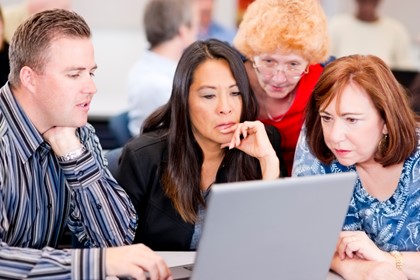
Attend Online Professional Development for Early Childhood Teachers:
Early Childhood Education professional development is important and here you will have the option of joining a class of colleagues who are like-minded in ensuring learning progression with technology. Complex and continuous online PD for early childhood educators is a key requirement of the productive integration of ICT into the learning processes of children. This is also a key strategy for developing technological literacy and ICT capability in ECE.
Apply Formative assessment strategies in Early Childhood Education:
Observing children is what you do best along with providing them with the foundations to key learning areas. Why not employ formative assessment strategies that will help you establish a baseline for growth in ICT Capability.
Encourage ICT experiences
Not all kids are used to playing with technology in the classroom so I have provided you with teaching strategies to help you achieve this.
Facilitate capabilities in ICT
Once you have got everyone on the same playing field it is time to facilitate children’s capabilities in ICT. Remember, this involves more than just the teaching of techniques and skills.
Involve parents in the integration of ICT and the development of ICT capability:
Believe it or not…parents can make a tremendous impact on children’s learning. Get them involved. Read how here.
Build on home experiences of ICT:
Children are already exposed to ICT at home and have begun to pick up new ICT skills even before they enter your early childhood education and care centre. Progression in learning needs to continue from this point so it important to build on this.
Boost literacy in Early Childhood with ICT:
ICT can greatly enhance the learning of literacy in any learning environment. You can pick up some great tips here.
Write quality transition statements concerning a child’s ICT capability:
This may occur at the end of the year, however, pick up these tips in advance so you can plan what you need to aim for throughout the year with the children in your care.
Modelling thinking and behaviour
In the early years, the way you model your thinking and behaviour when using Information and Communication Technology becomes a very powerful source of ICT learning for young children. One of the most significant ways that children learn at this age is through observation.
This is one of the key teaching strategies in early childhood that will be able to support children's technology learning by engaging in shared thinking. "You have really thought hard about where to put this door in the palace - where will you put the windows?"
Scaffold technology learning effectively and thoughtfully
Scaffolding in early childhood is more complex when it comes to technology integration so it is better to understand it in a way that you can adapt and support ICT learning better.
An effective early childhood teacher or care provider choose a strategy to fit a particular situation. Your ability to remain flexible and observant particularly when integrating technology in early childhood education will determine which strategy will be the most effective.
This list of teaching strategies early childhood can be adapted and learned in our online Teaching strategies in child care, preschool and kindergarten workshop. Earn valuable CPD hours today.
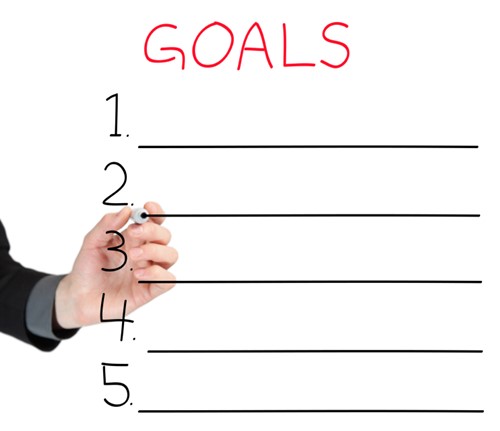
11 Steps for Curriculum Planning in Early Childhood Education
Children in preschool and kindergarten, not to mention those in Foundational education should be finding out about and identifying the uses of ICT in their everyday lives in addition to using programmable toys and computers to support their learning.
The following early childhood curriculum approaches will enable you to maximize the use of technology in early childhood education.
UNDERSTAND: Why planning is important in early childhood education?
Plan for Progression in ICT capability
Progression not only occurs in the classroom with lesson-by-lesson but also from year to year and even from unit-of-work to unit-of-work.
Plan for the continuity of ICT capability throughout the school
This requires more than a single effort of person - it is a whole-school approach and ensures that a child's capabilities in ICT continually build upon as they move throughout their school career.
Plan for Outcomes
For those in Early Childhood, it means ensuring that you are using the EYLF outcomes - particularly 4 and 5 - to plan your learning outcomes. Foundational teachers that may extend to Year 2, should use the Australian Curriculum outcomes in the Learning Areas.
Plan for personalised learning
Individual learning plans (ILPs) helps individual children achieve specific outcomes. You need to ensure that you are clear which learning outcomes you are working towards and why. What does the child understand now? How can you extend this learning? It has also meant being connected to a child's experience of the world.
Plan for ICT tools and Resources
Selecting the right ICT tools and resources is just as important as matching them to the intended learning objective. Factors that you need to consider include the 8 principles outlined in our early childhood online course. How do bee bots help to achieve outcomes?
Plan for the next session
Long-term and medium-term plans need to be considered. For long-term plans it is best to break into four subheadings such as resources, strategies, supporting learning, and organisation. Involve the whole staff because patterns in learning settings can inform your choices.
Plan appropriate ICT activities
Exposure to ICT will not develop a child's capabilities in ICT. Don't reinvent the wheel and remember, copying type finished work into a neat version is NOT an appropriate activity for them.
Plan the Learning Environment
The setting itself will have an impact on how you plan and also how will be able to employ your formative assessment measures in projects.
Plan the assessment of ICT capability
Assessments should always be planned and when determining a child's capabilities in ICT there is no exception to this rule. What method is the ideal way for you to ensure that you don’t just focus on one particular aspect of their ICT capability, mainly techniques and routines?
Plan to challenge a child's ICT capability
Children today are fluent with technology even more than the generations before them. As a teacher, you need to set challenges for students with ICT that will help them progress further in their capabilities.
Plan day-by-day
You mustn't forget about your short-term planning as this can change throughout the duration of the day or even hour. Don't be set in one thing that you planned earlier to ensure that continue to meet the learning needs of children in your care.
By planning for the integration of ICT across the entire early childhood curriculum you will ensure that ICT will be view as a tool to support and enhance teaching and learning, and not simply as a skill to be learned and an 'add-on' to the curriculum.
You can learn more about these curriculum planning in early childhood education by joining our online classes in ICT teaching strategies in early childhood.
You will learn how to optimise tech in learning and play in the early years learning environment today.
What are the technology teaching methods in early childhood education?
- Conduct a thorough analysis of the situation - effective planning calls for this!
- Maximise formative assessment in early childhood.
- Selecting developmentally appropriate technology in early childhood education.
- Employ evidence-based technology teaching strategies in early childhood.
- Promote literacy and numeracy development with technology.
- Encourage creative uses of technology in early childhood education.
- Integrate and understand technology effectively in STEM in early childhood.
- Implement a universal framework for inclusive education in early childhood education and care.
Maximising the use of technology in the early learning setting is important in an ever-increasing online and digital world. With young children entering preschool and kindergarten or even early years primary with a degree of technology literacy about them, it is the opportunity of early childhood teachers such as yourself to build on these home technology experiences through effective ICT integrated curriculum planning in early childhood education.
In the Early Years Learning Framework, this would consist of choosing one of the three curriculum approaches – Integrated, Inclusive, and Emergent. Past studies have shown that the integration of technology in early childhood education works best by using a thematic approach.
Strategic planning in early childhood education when it comes to technology integration in the classroom would be ensuring that you ask children’s parents or carers before and during the child’s time in your care, questions that will inform your planning for technology in early childhood education.
Technology for early childhood education can also help you in planning as well. For example, you can create proformas ready on your computer, there would also be the electronic view of the Early Years Learning Framework (or EYFS in UK) on the screen, and not to mention your planning in early childhood lesson plans could also involve the use of talking books for language development of children.
Strategic planning in early childhood education should, therefore, be considered when it comes to the integration of technology or ICT. This would involve the principles of programme planning in early childhood education adhering to the 11 key aspects of planning as shown below. Planning and assessment in an early childhood education as in any curriculum be it primary or secondary are closely linked.
As an early childhood educator, you should then encourage children to observe and talk about the use of ICT in the environment. It will be through an improved awareness that young children will become the technological innovators of the future.
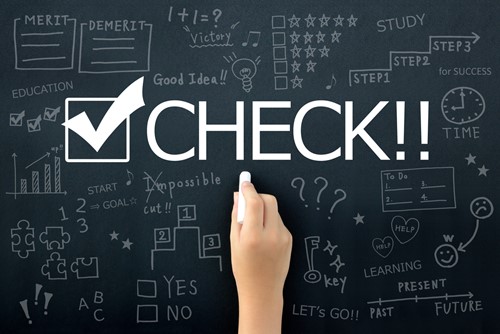
10 of the Best DAP ICT Teaching Strategies in ECE
When using technology in early childhood education, it is important that you invest time in knowing and understanding high impact ICT teaching strategies in early childhood.
This is what is known as teacher competence in ICT or another term is teacher ICT capability.
What are some ICT teaching strategies in early childhood that support the use of technology and develop child ICT capability and ICT literacy?
10 Effective DAP Teaching Strategies in Early Childhood
The following are all developmentally appropriate and will guide you in laying the foundation for effective 21st century skills in your centre or school today.
- Acknowledge the experiences children have at home with technology. This is by far the best way to begin planning for learning progression in ICT capability and ICT literacy in the early childhood education and care learning environment.
- Encourage children’s independent use of ICT by praising them and making them feel comfortable and safe. Also ensure that you encourage independent use of ICT at home.
- Support their learning by giving them feedback during the ICT activity and the use of technology in role playing. Ensure that it is specific so that the positive comments are linked to observable behaviour.
- Model attitudes, decision-making processes and behaviour when using technology in early childhood education.
- Demonstrate appropriate ICT techniques and routines to children during exercises. This usually involves going through with the children a number of processes which they must do in order to complete the task.
- Create or add an ICT challenge so that it will stretch the more capable children and help them go beyond the basics.
- Set up role play environments with technology so that they make advantage of what is available and you can monitor their reactions and document their learnings.
- Plan to develop every component of ICT capability with children by facilitating their capabilities through constructive instructions.
- Give assistance to children with using ICT in their environment by asking them the “what if…” questions. Cues and tips are also helpful.
- Develop your own competence in ICT by improving your ICT capability. This is not about acquiring more ICT skills, but developing understanding and judgement about how to use those ICT skills appropriately.
These 10 effective DAP teaching strategies will get you started to integrate technology successfully in the early learning environment today.
RELATED: What is Developmentally Appropriate Technology for Early Childhood Education

How to Use Assessment to Develop ICT Teaching Strategies?
To make sure that you apply the appropriate ICT teaching strategies for each individual child, it is important that you use data from assessments to you to help reflect on the effectiveness of an approach to a particular topic, theme or ICT skill.
This is important because through the effective integration of ICT in the classroom you can support the development of ICT capability.
And ICT capability is largely practical.
So here are some suggestions for you to learn how to develop teaching strategies now.
Reflection
Reflecting before or after events has been known to be able to improve future situations.
You need to ask yourself questions such as:
- Did the class make the sort of improvements as expected?
- Are there certain parts of the development that have demonstrated better than expected?
- Can you identify what it was that you said, or that they discovered, that might have brought about these improvements?
If you can, you know what to stick with and what you need to improve on in the future.
Intervene at the appropriate moments
By asking them lots of questions you will get a picture of what they really know and understand.
This will help you to decide where to go next.
It will also help you to identify opportunities for peer tutoring, self-help groups and so on.
You can probe children’s understanding more by asking them ‘why’ questions.
This also helps them become more aware of what they are understanding.
And this ensures that they are better equipped to help one another.
Encouraging them to talk about it and to reflect on it will help them move closer to being autonomous users of ICT.
Ask for a demonstration
A simple demonstration of how to save or print a file on the computer either to you or to someone else is a good way to assess how well they have been taught.
Eavesdrop
Another way that you could learn information to help you inform your teaching strategies is to eavesdrop on children when they are collaborating.
Before you intervene, listen first!
If you barge into a collaborative conversation, they will assume you know what they have been talking about all the time.
Peer tutoring
Another suggestion would be to identify children who are more capable of using ICT.
Peer tutoring is one of the most effective means of support you can establish.
Use my advice on grouping children when using ICT that includes considering levels of capabilities in ICT.
For example, a most able child could help a ‘middle range’ child as a pair.
And a ‘middle range’ can help a lower attainer.
Identify common errors
You can also identify common errors and talk about these in large groups.
This may bring up many misconceptions about using the computer.
Assess group work
If you have planned a group task where the computer is used as a tool to gain information it may create some issues.
However, if you use the suggestions offered in my full online PD you will learn how to overcome this hurdle with ease.
The benefit of group work with computers is that they learn a lot from each other.
Assess individual work
Not all work on the computer is done in groups and when individual work is set it is essential that you apply key strategies such as those mentioned in my full online pd.
For example, I go into depth as to how you can effectively assess ICT capability in the early learning environment.
You may find that some children never seem to have an opportunity to hold a mouse and may need their confidence boosted so they can develop their fine motor skills.
Use your assessment findings to establish a starting point for learning with ICT
Go through all the data that you have obtained from the above suggestions and start plotting a path for children to learn.
These are my suggestions as to how to improve your ICT teaching strategies.
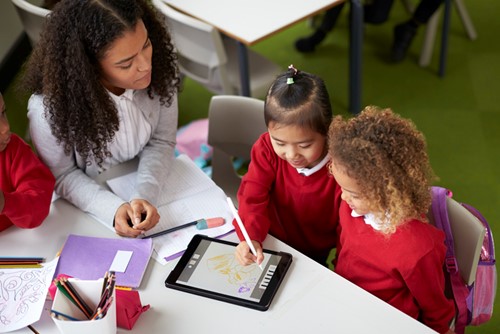
How to achieve a Balanced Curriculum today?
The rapid growth of digital technologies during the 21st century has provided young children with access to new contexts for play activities through such devices as computers, tablet computers, smartphones, and digital toys.
Having a balanced curriculum, in the 21st century, would therefore include promoting digital literacy in early childhood education which is something that all young children are entitled to. This is something that all schools and early childhood learning centres should offer.
Digital pedagogy in early childhood education should then have a balance between open-ended play-based learning and intentional teaching practices. However, this can be difficult to achieve as they appear to be at odds with each other.
Here is what I mean – Open-ended play-based learning provides children with important opportunities for exploring and experimenting with ideas while intentional teaching practices consider the role of adult engagement in children’s play (thespoke.earlychildhoodaustralia.org.au). It is an “active process and a way of relating to children that embrace and builds on their strengths, interests, ideas, and needs. It requires teachers to be purposeful in their decisions and actions” (qcaa.edu.au).
What is the play-framework?
Earlier this year, I had the privilege of co-hosting an early childhood education webinar with John Siraj-Blatchford who presented a wonderful discussion about sustainability in early childhood education. The play-framework (Edwards, MacKenzie, Moore & Boyd, 2013) is based on this principle and it involves three main play-types: Open-ended play; Modelled play; Purposefully-framed play.
The play-framework is also based on these three principles:
- Principle 1 – that all three play-types are equally valuable;
- Principle 2 – that the three play-types can be used in multiple combinations. This principle can be used by early childhood educators to engage young children in learning a concept over any period of time and this may be from a matter of minutes through to a month of planned play-based learning.
(Edwards, MacKenzie, Moore & Boyd, 2014)
Here is an example of each of these in action. It is based on children’s learning about recycling.
Open-ended play - Sandy placed a range of different household recyclable materials in the home corner. She also included a recycling, compost and rubbish bin in the corner.
In a digital play context:
Sandy placed a range of different digital technologies in the role play area. She included a laptop, smartphone, and a digital camera.
Modelled play: Sandy joined the children in the home corner and illustrated which items could be placed in the different bins through role-play.
In a digital play context:
Sandy joined the children and modelled and demonstrated how to use each of the digital technologies that she had laid out for them.
Purposefully-framed play: Sandy invited the children to discuss their home recycling practices, to read books with her about rubbish and to view video-footage about the process of recycling.
In a digital play context:
Sandy invited the children to discuss their home uses of digital technology, to view a video about different technologies, and read a few books or stories which include digital technologies.
How can the play-framework be used?
This framework can be used to support children’s conceptual understanding in a broad array of content areas. By developing children’s conceptual understanding in meaningful and purpose-driven activities you can engage children in their learning about STEM (science, technology, engineering and maths) as well as the arts and literacy.
Conceptual understanding underpins every ICT technique that can be demonstrated by you as the teacher and is very important in the development of young children’s ICT capability and digital literacy in early childhood education.
It is, however, only achieved when intentional play based learning is employed in the early childhood learning environment as many digital technologies involve different ICT techniques, processes and routines to be able to understand their digital potential. That is, developing metacognition throughout the learning activities.
What are the benefits of the play-framework?
The key benefit of the framework is that it helps you balance open-ended play with intentional play based learning. It also benefits young children’s learning as it increases their access to multiple experiences for supporting learning and this includes exploration, experimentation, modelling by early childhood teachers, discussion, conversation and access to information resources (Edwards, MacKenzie, Moore & Boyd, 2014). Vygotsky (2004) made particular references in his literature to do with multiple learning experiences as the provision of a ‘rich reality’ for children’s learning.
Conclusion
The play-framework as a model for early childhood teachers to balance open-ended play-based learning with intentional play based learning is the ideal strategy for you to apply for any play context including digital play in the early years. Through using these multiple learning experiences the children in your care can build upon their capabilities in ICT as a result of effective development of digital literacy in early childhood education. You can learn about teaching strategies Early Childhood Australia from this website.
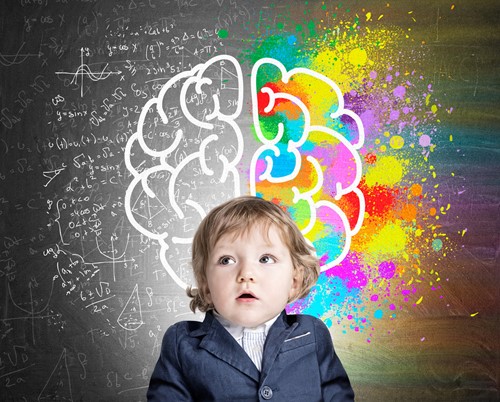
How to Intentionally Teach Creative Activities with ICT?
Creative development is in its own area of learning within the Early Years Learning Framework and in this article, I will address intentional teaching strategies in early childhood education learning activities that you can use to help promote learning when integrating ICT in preschool or ICT in kindergarten if you teach in Queensland.
I will take you step by step through the ICT teaching strategies that you can apply as you make sound instructional decisions that will promote learning in a creative technology-rich learning environment.
*****Note ***** This is an excerpt from my online pd for early childhood teachers on integrating ICT in preschool, kindergarten and early primary.
When you intentionally teach with ICT in early childhood education you can enhance dispositions such as creativity while at the same time developing dispositions in ICT capability.
In this example of Information and Communication Technology in preschool, you will learn how to use creative development activities that will take you beyond just the teaching of ICT skills and techniques to develop and support ICT capability in early childhood learning activities.

Early Learning Activity
Art programs allow children to do things they would not be able to do outside of the software. In this activity, you will need to model the use of an art program to children.
You will learn how to seek and plan to develop all components of ICT capability beyond just the teaching of ICT skills and techniques to explore new information and represent their ideas.
In this example of using ICT in early childhood education we will focus on the use of graphics programs such as drawing and painting programs.
Model the use of ICT techniques in front of children as highlighted in my online PD for early childhood teachers. Then provide them with a meaningful activity embedded in purposeful related contexts. For example, they can do a drawing for a picture/story book they might be creating.
As an extension to this activity, you could allow children to photos of their play outside and then have them use those same ICT techniques to colour and write on images helping them to plan and evaluate their use of ICT in preschool activities.
Early Years Learning Goals
This activity is based on the breadth and depth of the EYLF principles and early learning goals.
The early years learning objectives of this particular activity will combine that of EYLF learning outcome 4 and EYLF learning outcome 5.
The key learning outcomes will address:
Creative Development - EYLF Learning Outcome 4:
- Explore ideas and theories using imagination, creativity and play;
- Use ICT to investigate and problem solve;
- Experiment with different technologies.
You would promote this by:
- introduce appropriate tools, technologies and media and provide the skills, knowledge and techniques to enhance children’s learning;
- develop their own confidence with technologies available to children in the setting.
Use of ICT in Preschool - EYLF learning outcome 5
- Use ICT as tools for designing, drawing, editing, reflecting and composing;
- Use ICT to access images and information, explore diverse perspectives and make sense of their world
You will promote this by:
- Teaching ICT skills and techniques in the context of developing ICT capability within this activity.
What do you need to know about Drawing and Painting programs?
It is important that you are competent and confident in the use of early childhood and primary graphics software in order to facilitate children’s learning. You will need a working knowledge of the software to plan, support and assess appropriate activities.
You will also need to have strategies to support the children in their discovery of how the software works, as well as to assist them with problem-solving.
Teaching with and about any graphics software will involve you:
- Preparing resources: For example, a prepared graphics document that you used to demonstrate the ICT techniques;
- Selecting appropriate activities: For example, finding opportunities to exploit ICT in preschool activities that draw on the early learning goals;
- Making explicit links between knowledge, skills and understanding: Graphics software has applications across the range of both the EYLF curriculum and primary curriculum, and therefore may provide opportunities to make explicit links in knowledge, skills and understanding.
Supporting Child ICT Capability
As ICT is becoming more embedded and ubiquitous in the environment around children you can support the development of ICT capability particular in creativity lessons in early learning activities.
Understanding that ICT capability is constituted of 5 key components is crucial in ensuring that they become creative users of ICT in preschool, kindergarten or in their early primary classroom.
Your aim is to make sure that you go beyond just teaching ICT skills and techniques by applying these following strategies so that children not only know how to use an ICT technique, but ‘know that they know’ any ICT technique and am able to make the decision as to whether the ICT technique is suitable for the solution to the problem being addressed.
Here is some of the ICT teaching strategies discussed in my online pd for early childhood teachers:
- Routines – if children need help and do not meet these important ICT techniques sufficiently frequently, focused practice tasks may be given.
- ICT techniques – give the ICT technique a name and this should be seen not as something extra to learn but as a means of communicating and thinking about the action and its effect.
- Processes – discuss what the children are doing at the process level rather than identifying the next ICT technique. You can draw on relevant images and analogies where it is helpful in order that children gain a feeling for the whole process.
- Higher Order skills – manage the planning, monitoring and evaluation of children’s work, but involve children in the process through whole class discussion.
Concepts - challenge naïve ideas about handling ICT tools and techniques.
Resources Needed
- Graphics software such as Paint 3D with Windows or even using the drawing tools in MS Word;
- Images either photographs that you have taken or other images taken from the Internet;
- Computer;
- Digital camera.
Levels of Differentiation
Graphics software –
- To be able to complete program without support;
- To ask for specific software title;
- To be able to complete program unaided;
- To load own disc and print out if appropriate.
Computers –
- To have opportunity to access computer via touch-screen, mouse, IWB;
- To name peripherals – mouse, monitor, keyboard, printer, webcam, scanner, cursor;
- To use touch screen to select icons etc;
- To use mouse to move cursor – select icons (click, click and drag) (click, drag, drop).
